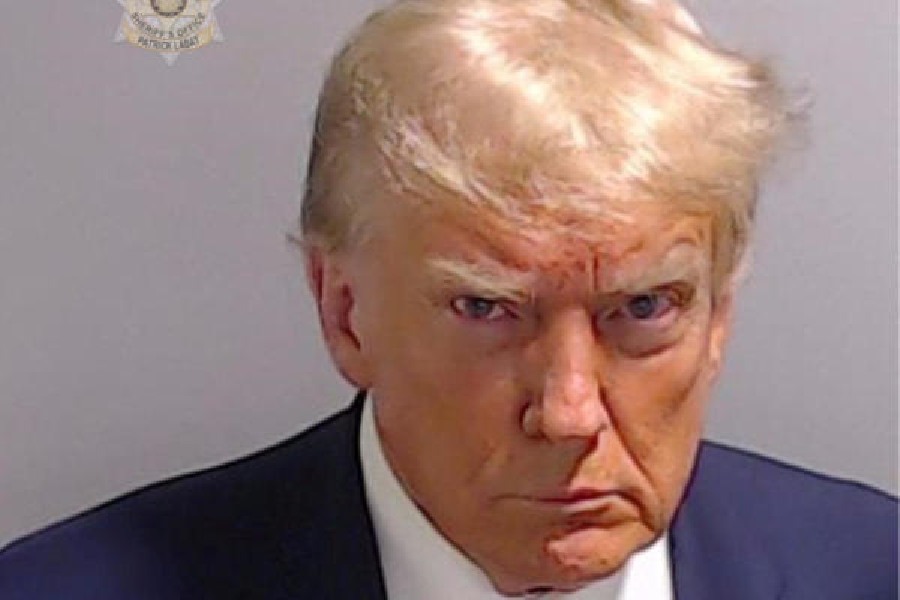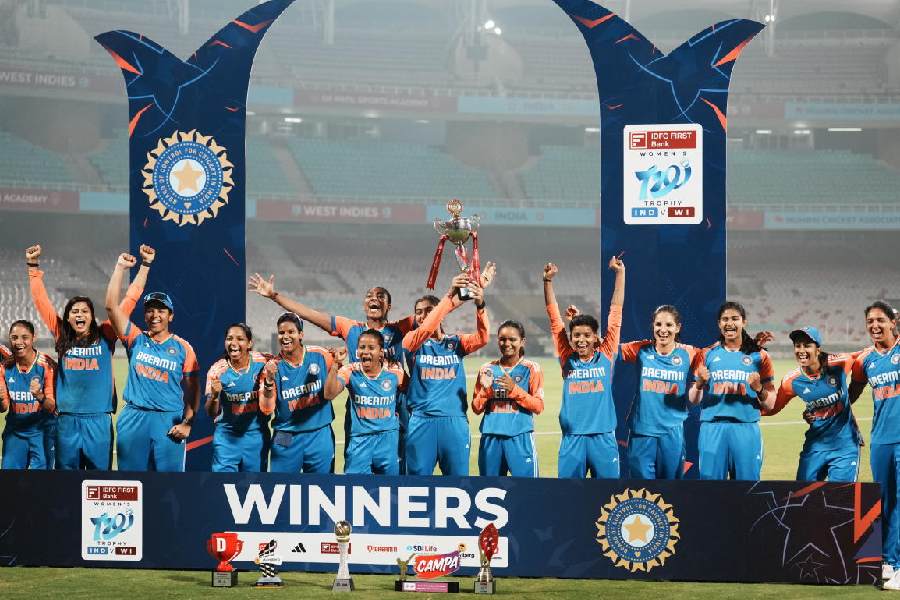As soon as it was taken, it became the de facto picture of the year. A historic image that will be seared into the public record and referred to for perpetuity — the first mug shot of an American President, taken by the Fulton County, Georgia, Sheriff’s Office after Donald J. Trump’s fourth indictment. However, because it is also the only mug shot, it may be representative of all of the charges.
As such, it is also a symbol of either equality under the law or the abuse of it — the ultimate memento of a norm-shattering presidency and this social-media-obsessed, factionalised age.
“It’s dramatically unprecedented,” said Sean Wilentz, a professor of American history at Princeton University. “Of all the millions, maybe billions of photos taken of Donald Trump, this could stand as the most famous. Or notorious.” It is possible, he added, that in the future the mug shot will seem the ultimate bookend to a political arc in the United States that began decades ago, with Richard Nixon’s “I am not a crook.”
In the photo, Trump is posed against a plain grey backdrop, just like the 11 of his fellow defendants whose mug shots were taken before him, including Mark Meadows, Sidney Powell and Rudolph Giuliani.
As with them, his face is lit from above by a blinding white flash that hits his ash blond hair like a spotlight. As usual, he is dressed in the colours of the American flag: navy suit, white shirt, bright red tie — though his typical flag lapel pin is either absent or invisible in the picture. He glowers out from beneath his brows, unsmiling, eyes rendered oddly bloodshot, brow furrowed, chin tucked in as if he is about to head-butt the camera. The image is stark, shorn of the flags and fancy that have been Trump’s preferred framings for photo ops at Mar-a-Lago or Trump Tower, or during his term in office, and that communicate power and the gilded glow of success.
Was the photo necessary? In the last few years, a number of police departments and newsrooms around US have been rethinking the practice of releasing mug shots to the public, viewing them as prejudicial at a time when a subject has not yet been proven guilty. The prosecutors in the other three Trump cases have refrained from taking mug shots of Trump at all, given that he is one of the most recognizable people in the world and not considered a flight risk. Georgia laws, however, dictate that a mug shot be taken for a felony offence, and the Georgia sheriff in charge of booking has said that all defendants will be treated equally.
Either way, it is part of the pageantry of the moment, part of the theatre of law. And Trump is a man who has always understood the power and language of theatre. Of putting on a show. In this way, an image can be used for viral communication and opinion-making.
That’s part of why the “would they or wouldn’t they” discussion about mug shots resurfaced each time an indictment was handed down. In its concrete reality, the Fulton County mug shot may seem more irrevocable than anything else that has happened in the Trump cases thus far — at least until the two sides enter a courtroom. Perhaps that is why the concept alone started trending on X, the platform formerly known as Twitter, even before Trump had boarded a plane to Georgia to surrender.
While very few voters are likely to have read any of the Trump indictments in full, they will almost all definitely see the mug shot, and the former president — who posted this one on his recently reinstated feed on X, not long after it was released — cares deeply about his pictures. He always has.
As far back as 2016, he was complaining about photos of him that NBC had used, especially one that he said showed him with a double chin. In 2017 he tweeted about a CNN book on the election: “Hope it does well but used worst cover photo of me!” In 2020, when a snap of him on the White House lawn with his hair blown back in the wind went viral, he chimed in: “More Fake News. This was photoshopped, obviously, but the wind was strong and the hair looks good? Anything to demean!”
And earlier this month on Truth Social, he said of the Fox News show Fox & Friends, “They purposely show the absolutely worst pictures of me, especially the big ‘orange’ one with my chin pulled way back.” (The picture he seemed upset about showed him with his chin tucked in, rather than jutting out, creating the appearance of a few extra chins.) The suggestion was that this was part of the reason he would not join the first Republican primary debate.
He has crowed about how generals advising him were “better looking than Tom Cruise and stronger”; insisted that the women who work for him should “dress like women”, according to Axios; and griped that Vogue never gave Melania a cover while he was in the White House.
He knows that for an electorate raised on TV and social media, the picture is what lasts. It’s what is remembered (and what is memed). What makes the myth? Or unmakes it.











